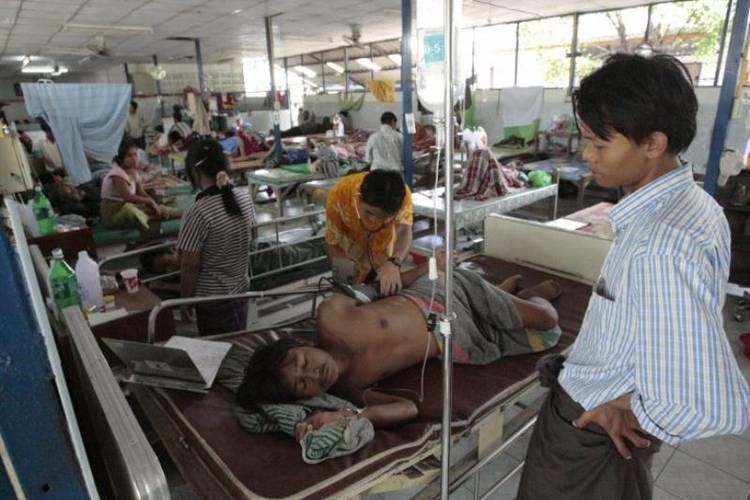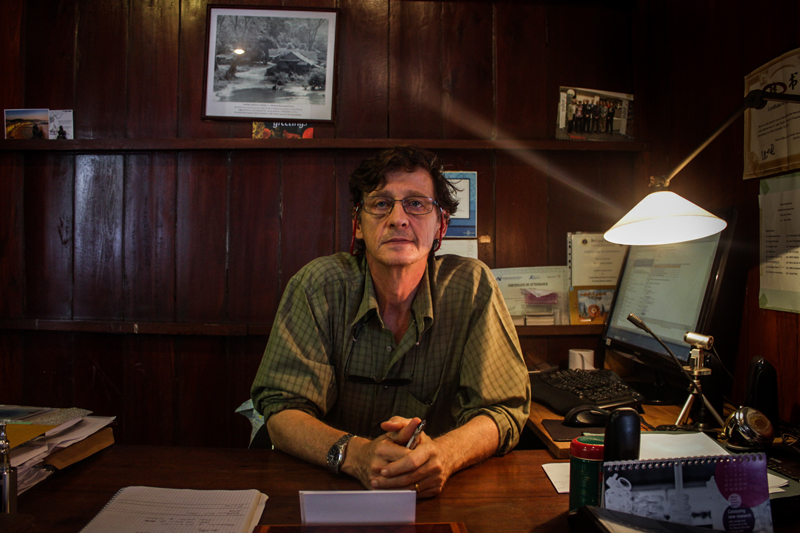On a map of Southeast Asia, research scientist François Nosten points to several regions which could trigger a new humanitarian emergency.
They include the border areas of Cambodia, Laos, Vietnam, Thailand and Myanmar, where the best weapon to fight malaria — artemisinin — is becoming less effective. And there are no new drugs available to replace it.
Nosten, who works at the Shoklo Malaria Research Unit (SMRU) in Mae Sot, explained that malaria has become resistant to all drugs in the last decade and tolerance to this drug is a new phase of evolution of the parasite.
If urgent measures are not taken, resistance will spread to India and Africa. Once that happens, it could be too late. Potentially hundreds of millions of people will be affected.
“Eighty percent of cases we see now in our clinic have resistant parasites, even though the number of patients is not high. We will have another solution available in the next few years, but not now,” the scientist says.

A young malaria patient is treated at Shoklo Malaria Research Unit in Mae Sot. Photo: Flickr user Novartis AG
Nosten’s wooden office on the border has become the front line in the fight against malaria drug resistance, after resistance to artemisinin was first detected in 2005 in western Cambodia.
In the 1990s Nosten faced the same prospect of incurable malaria when the drug they were using — mefloquine — ceased to be effective.
“I remember a young Buddhist monk who came to our clinic after two weeks of taking mefloquine. His blood was full of parasites and we tried in vain to save his life,” he says.
Last year, malaria was the cause of death of 438,000 people, most of them in sub-Saharan Africa, according to a recent report by Unicef and the World Health Organization (WHO).
The figure is dramatic, but it represents an improvement considering that since 2000 the mortality rate has decreased by 60 percent and infections have fallen by 37 percent. The report shows that efforts to deal with the disease have saved more than six million lives.
But there has been no time for celebrations since history repeats itself. The mosquitoes are constantly adapting, while the parasites have genetic information that helps them adapt quickly to drugs.
When they are in the blood, the parasites grow, reproduce and are sucked up by other mosquitoes that inject another person, generating a new chain of infection.
Nosten says a vaccine will not be available for years, as the malaria parasite is much more sophisticated than a virus. It has a complex life, has adapted to humans for thousands of years and knows how to escape and hide from the drugs.
“We should first understand how human beings respond to malaria and natural defenses against the disease,” he says. “And we don’t have much time.”

File photo of a patient receiving treatment for malaria at a clinic in Mae Sot. Photo: Reuters
The United Nations and the Bill and Melinda Gates Foundation have recently called for eradicating the disease by 2040, saving 11 million lives over the next 25 years, and assuming an economic profit of US$2 trillion.
“All we can do is try to eliminate the resistant parasite before it reaches Africa,” says Nosten. “Why have we not done this before? Over the last few years, thanks to artemisinin and treating patients as soon as possible, we have managed to significantly reduce the number of cases. Now that there is less malaria, we believe it is possible to remove it and prevent its spread to other countries.”
“Although it may be too late,” he adds.
The resistance has already spread from Cambodia to India, Nosten warns, as he criticizes the lack of cooperation from governments.
The treatment for malaria is simple, as it only requires three days of artemisinin-based combination therapy.
However, one of the main challenges is the difficulty faced by many Southeast Asian villagers to reach health centers, which are often several hours’ walk through the jungle away.
The constant confrontation between ethnic groups and government forces is another bump in the road, as it causes the villagers to move frequently and makes it even more difficult to maintain control over the parasite.
In some pilot studies in Southeast Asia, Nosten’s team has also found that there are communities where almost half of the villagers carry parasites in their blood but have no symptoms, and therefore are not treated in time. As a result, blood parasites survive for months or even years.
“We need to convince the villagers in remote areas to medicate even though they are not yet sick. They must rely on and work with us,” he says.
About 500 small health centers also operate along the borders looking for the first symptoms and where tests can be performed quickly and patients can receive treatment.
However, progress also seems to stagnate at the bureaucratic level and malaria remains fatal in part because many countries are not prepared to do battle.
“WHO and especially politicians are not listening. It is difficult to convince them of the risk because their vision is one, two, three or four years and we are talking about what can happen in 15 years. The Burmese government is now involved, but the resistant parasite is already moving to India, so we could lose the race. Anyway, we have to try [removal],” explains Nosten.
“If resistance continues to expand, a million people will die. The efforts and the millions of dollars that have been invested in the fight against malaria over the last 20 years will be useless.”
Story: Ana Salvá in Mae Sot




